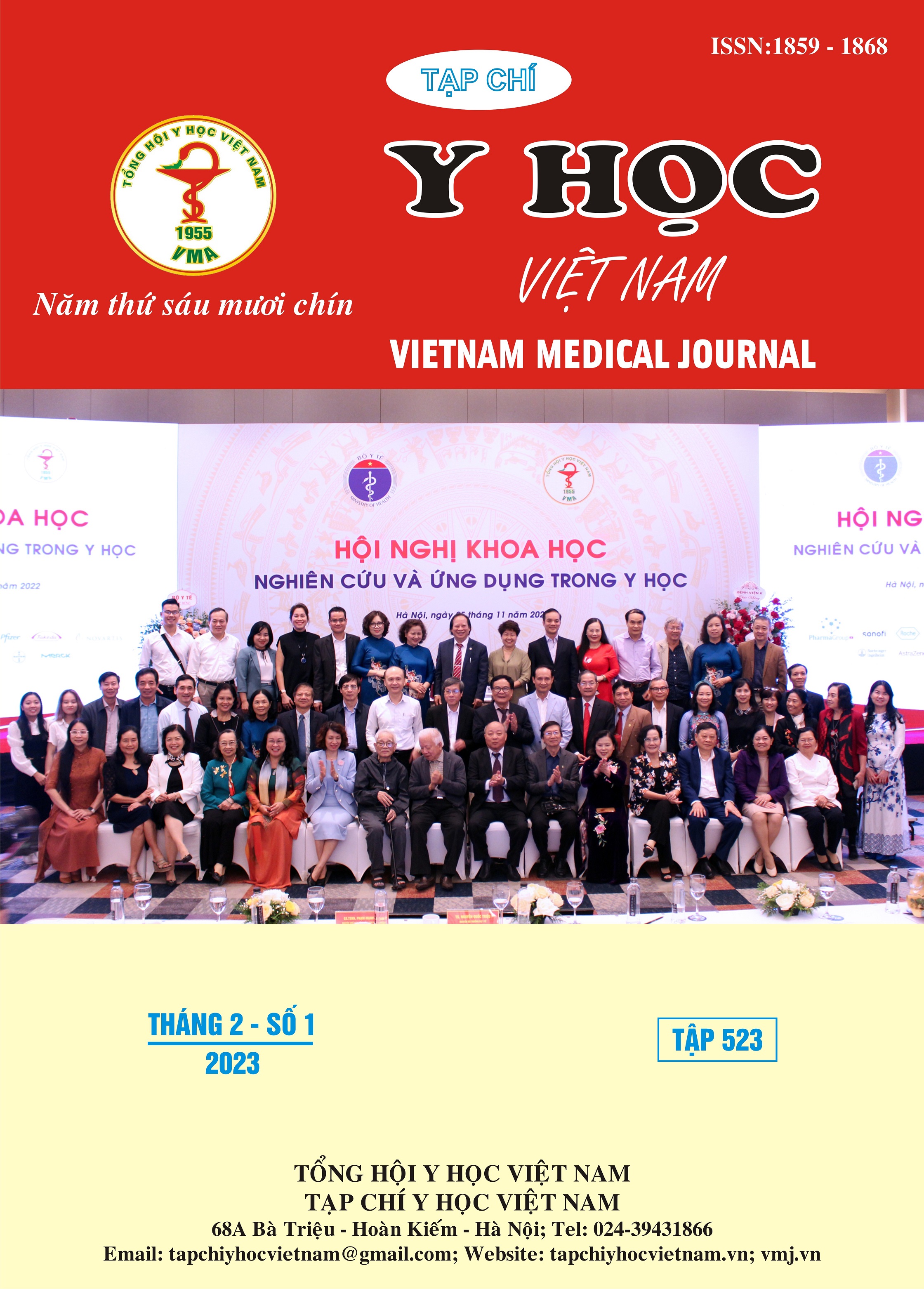NHẬN XÉT VAI TRÒ SINH THIẾT KIM DƯỚI HƯỚNG DẪN SIÊU ÂM TRONG CHẨN ĐOÁN TÍNH XÂM NHẬP CỦA UNG THƯ TUYẾN VÚ
Nội dung chính của bài viết
Tóm tắt
Mục tiêu: Đánh giá giá trị của sinh thiết kim dưới hướng dẫn siêu âm trong chẩn đoán thể mô học và mức độ xâm nhập của ung thư biểu mô (UTBM) tuyến vú đối chiếu với mô bệnh học sau phẫu thuật. Đối tượng và phương pháp nghiên cứu: Nghiên cứu hồi cứu được tiến hành trên 55 bệnh nhân UTBM tuyến vú, được chẩn đoán bằng sinh thiết kim dưới hướng dẫn siêu âm từ tháng 6/2021 đến 6/2022 được phẫu thuật tại bệnh viện K. Mô tả đặc điểm hình ảnh tổn thương trên siêu âm, phim chụp tuyến vú và các yếu tố trong quá trình sinh thiết. Đánh giá mức độ phù hợp chẩn đoán mô bệnh học sinh thiết kim và mô bệnh học sau phẫu thuật về thể mô học, tính chất xâm nhập; phân tích các yếu tố liên quan. Kết quả: Kích thước trung bình của khối u là 21,9mm. UTBM tuyến vú thể ống thường gặp nhất, chiếm 76.4%. Tỷ lệ chẩn đoán đúng thể mô học UTBM tuyến vú trên mẫu mô sinh thiết kim dưới hướng dẫn của siêu âm, so với phẫu thuật, là 74,5%. Trong chẩn đoán UTBM tuyến vú xâm nhập, sinh thiết kim cho độ nhạy, độ đặc hiệu và giá trị chẩn đoán đúng lần lượt là 87%, 100% và 87.3%. Giá trị chẩn đoán dương tính và giá trị chẩn đoán âm tính là 100% và 12.5%. Kết luận: Sinh thiết tuyến vú bằng kim dưới hướng dẫn siêu âm là phương pháp có giá trị trong chẩn đoán mô học, cũng như trong chẩn đoán tính xâm nhập của UTBM. Tuy nhiên, trong chẩn đoán UTBM tuyến vú tại chỗ, sinh thiết kim vẫn còn nhiều hạn chế, đòi hỏi tăng kích thước mẫu mô hoặc số mảnh bệnh phẩm nhằm tăng khả năng chẩn đoán.
Chi tiết bài viết
Từ khóa
UTBM tuyến vú, chẩn đoán típ mô học, tính chất xâm nhập, sinh thiết kim
Tài liệu tham khảo
2. Gradishar WJ, Anderson BO, Balassanian R, et al (2018). Breast Cancer, Version 4.2017, NCCN Clinical Practice Guidelines in Oncology. J Natl Compr Canc Netw, 16(3):310-320.
3. Ough M, Velasco J, Hieken TJ (2011). A comparative analysis of core needle biopsy and final excision for breast cancer: histology and marker expression. Am J Surg, 201(5):692-4.
4. Brennan ME, Turner RM, Ciatto S, et al (2011). Ductal carcinoma in situ at core-needle biopsy: meta-analysis of underestimation and predictors of invasive breast cancer. Radiology, 260(1):119-28.
5. Park I, Kim J, Kim M, et al (2013). Comparison of the characteristics of medullary breast carcinoma and invasive ductal carcinoma. J Breast Cancer, 16(4):417-25.
6. Ozdemir A, Voyvoda NK, Gultekin S, Tuncbilek I, Dursun A, Yamac D (2007). Can core biopsy be used instead of surgical biopsy in the diagnosis and prognostic factor analysis of breast carcinoma? Clin Breast Cancer, 7(10):791-5.
7. Kerlikowske K (2010). Epidemiology of ductal carcinoma in situ. J Natl Cancer Inst Monogr, 2010(41):139-41.
8. Thomas M, Kelly ED, Abraham J, Kruse M (2019). Invasive lobular breast cancer: A review of pathogenesis, diagnosis, management, and future directions of early stage disease. Semin Oncol, 46(2):121-132.
9. Badoual C, Maruani A, Ghorra C, Lebas P, Avigdor S, Michenet P (2005). Pathological prognostic factors of invasive breast carcinoma in ultrasound-guided large core biopsies-correlation with subsequent surgical excisions. Breast, 14(1):22-7.
10. Harris GC, Denley HE, Pinder SE, et al (2003). Correlation of histologic prognostic factors in core biopsies and therapeutic excisions of invasive breast carcinoma. Am J Surg Pathol, 27(1):11-5.


